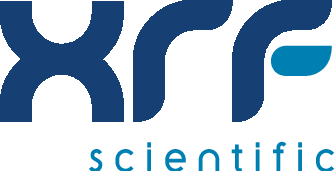Choosing the Ideal Fusion Flux for Consistent XRF Sample Preparation
Consistent, high-quality XRF results rely on far more than just the performance of the spectrometer. The accuracy of the data begins with the way the sample is prepared. Fusion XRF sample preparation is a reliable method for generating reproducible data from oxide, mineral, and geological samples, as it converts powders into homogeneous glass beads that minimize particle-size and mineralogical effects. At the centre of that process lies the fusion flux, a borate-based chemical reagent that lowers the sample’s melting point and enables complete dissolution during fusion. Its chemistry, purity, and handling determine whether the sample fully dissolves and how uniform each bead will be. Selecting the right fusion flux is therefore a critical step in ensuring consistent analytical performance over time.
Understand Your Sample Matrix
Before selecting a fusion flux, it is essential to comprehend what you are trying to dissolve. Each XRF sample behaves differently under heat, so the fusion flux must complement the sample’s chemistry rather than react unpredictably with it.
Start by identifying the dominant oxides or mineral phases like silica, alumina, lime, magnesia, or iron oxide. This will help identify the chemical nature of the XRF sample, distinguishing silica- and alumina-rich (acidic) materials from those dominated by calcium, magnesium, or iron oxides (basic). Acidic materials often need a more reactive fusion flux to ensure complete dissolution and form a stable, uniform melt, while basic oxides require a fusion flux that controls melt viscosity and prevents crystallization. Should your samples contain sulfides, volatiles, or refractory minerals, consider oxidation steps or custom fusion flux additives that promote full melting.
Understanding the XRF sample matrix is critical for reliable fusion, and any mismatch between the sample and flux can lead to incomplete melting or poor reproducibility.
Match the Fusion Flux Chemistry to the XRF Sample
With the XRF sample characterized, the next step is to align its chemistry with the correct fusion flux composition. Most fusion workflows use lithium borate fluxes because they produce stable, easily dissolved melts that suit a wide range of oxides. Two common types of lithium borate flux are used, each offering distinct melting behavior:
- Lithium metaborate (LiBO₂)- More reactive and ideal for acidic, silica-rich materials. It helps dissolve refractory silicates and forms a fluid melt.
- Lithium tetraborate (Li₂B₄O₇)- More stable and suited to basic materials rich in calcium, magnesium, or iron oxides.
For mixed or variable matrices, blended fluxes such as 66:34 or 50:50 mixtures of tetraborate and metaborate offer balanced reactivity and melting behavior. These blends are particularly effective for complex materials such as cements, limestones, and heterogeneous geological samples.
Where samples are especially challenging, custom flux formulations containing oxidizers, lanthanum modifiers, or fluoride additives may help achieve complete dissolution. The objective is to reach a neutral reaction between the fusion flux and XRF sample, forming a homogeneous melt without volatilization or contamination.
Prioritize Purity and Consistency
The quality of a fusion flux directly affects the quality of the analytical data. Even trace impurities in the fusion flux can introduce background peaks that interfere with trace-element analysis. Selecting high-purity or ultra-high-purity fusion fluxes reduces this risk and provides greater confidence in long-term data stability.
Moisture control is equally important. Fusion fluxes that absorb water alter their true mass and can produce bubbles or spattering during melting. Using anhydrous, non-hygroscopic fusion fluxes stored in airtight containers helps maintain weighing accuracy and bead quality.
Consistency between batches is another critical factor for sustaining the accuracy and stability of XRF analytical insights. Always confirm that a fusion flux supplier provides impurity certificates and batch analysis data to support traceability and reproducibility. This will support long-term data integrity and comparability across XRF analyses.
Define and Control Fusion Parameters
A fusion flux’s performance is enhanced through pairing it with a controlled fusion process. Keep the flux-to-sample ratio consistent, typically between 5:1 and 10:1 by mass. This ensures the sample is fully dissolved without excessive dilution.
Additionally, maintaining a stable fusion temperature and dwell time is critical for promoting complete melting and preventing the volatilization of sensitive components. Some materials may also require gentle rocking or agitation to achieve uniformity.
If the glass bead tends to stick or crack, a small amount of non-wetting or release agent, such as lithium bromide or lithium iodide, can be added to improve pouring and release from platinum labware. Recording this adjustment and other fusion conditions in a standard operating procedure (SOP) helps ensure every operator follows the same process and produces comparable results.
Step 5 – Confirm the Ideal Fusion Flux
Laboratories will know they have found the ideal fusion flux when the entire XRF sample preparation process produces repeatable, defect-free glass beads and stable analytical readings over time. The hallmarks of a successful match between the fusion flux and XRF sample include:
- Complete dissolution- The bead is clear, glassy, and free of undissolved particles.
- Stable bead geometry- No cracks, bubbles, or crystallization after cooling.
- Reproducible results- Replicate samples yield consistent elemental concentrations.
- Low and stable backgrounds: Minimal contribution from flux impurities.
- Batch consistency: No performance change across different flux lots or operators.
If these performance indicators are present, XRF sample preparation becomes more predictable and the analytical workflow more efficient.
The Fusion Flux is Key to Consistency
In XRF analysis, consistency is established at the sample preparation bench. The ideal fusion flux dissolves the sample completely, forms a uniform bead, and performs the same way every time. XRF Scientific designs and manufactures a comprehensive range of lithium borate fusion fluxes to support reproducible XRF sample preparation across laboratories worldwide. From pure metaborate and tetraborate to eutectic blends, ultra-high-purity grades, and custom formulations with additives or release agents, each fusion flux is engineered to help achieve accuracy and stability in every fusion. Find out more today about XRF Scientific’s fusion flux solutions for precise XRF sample preparation.




